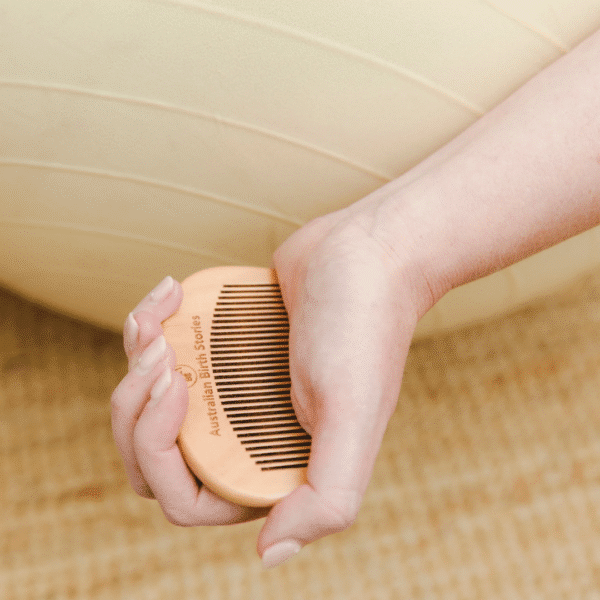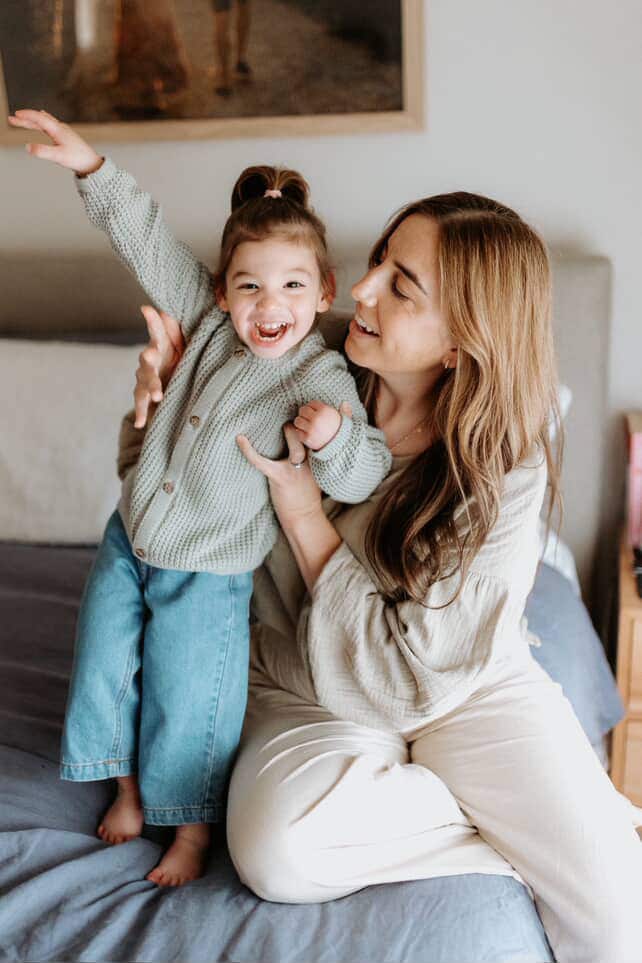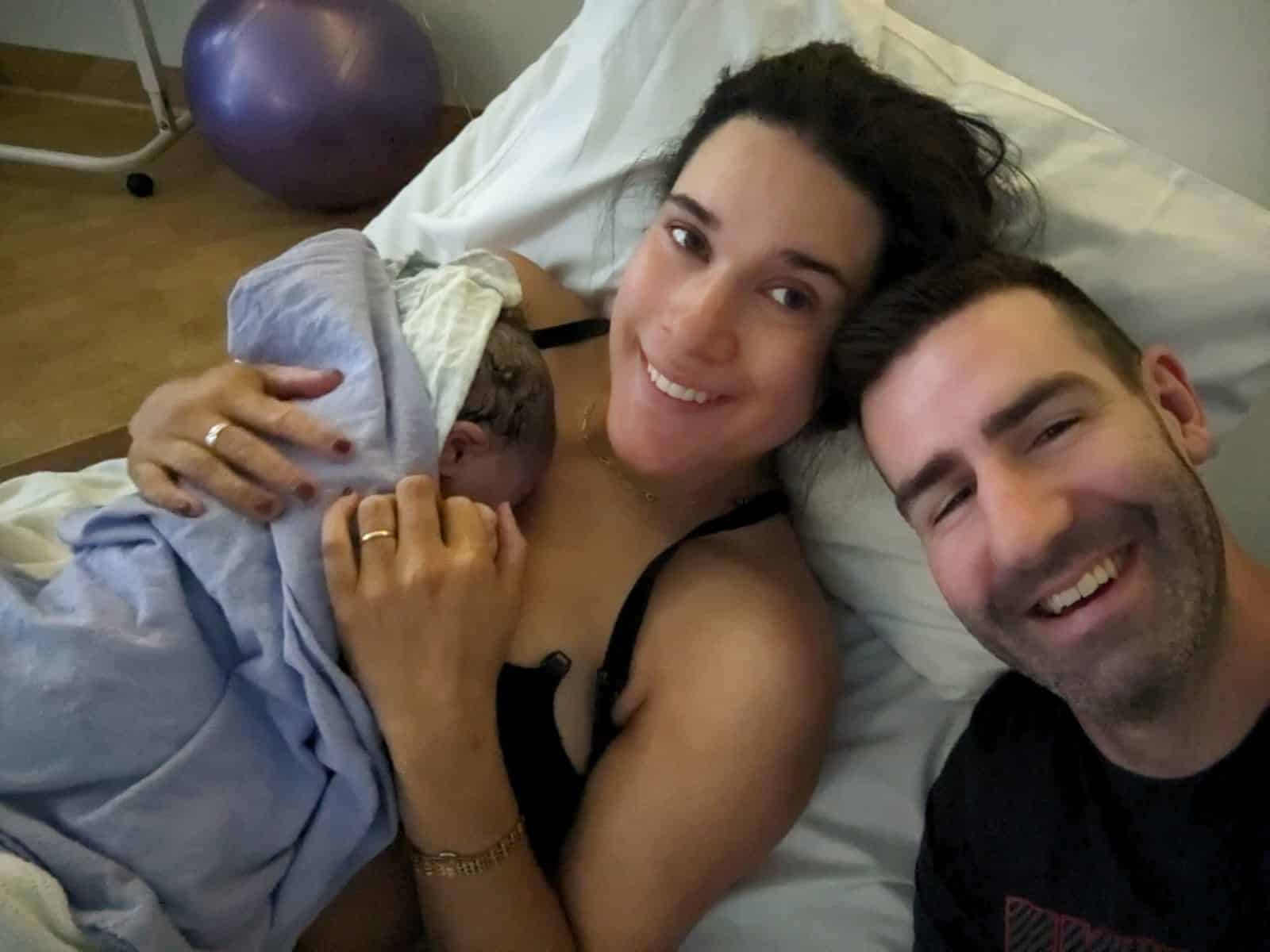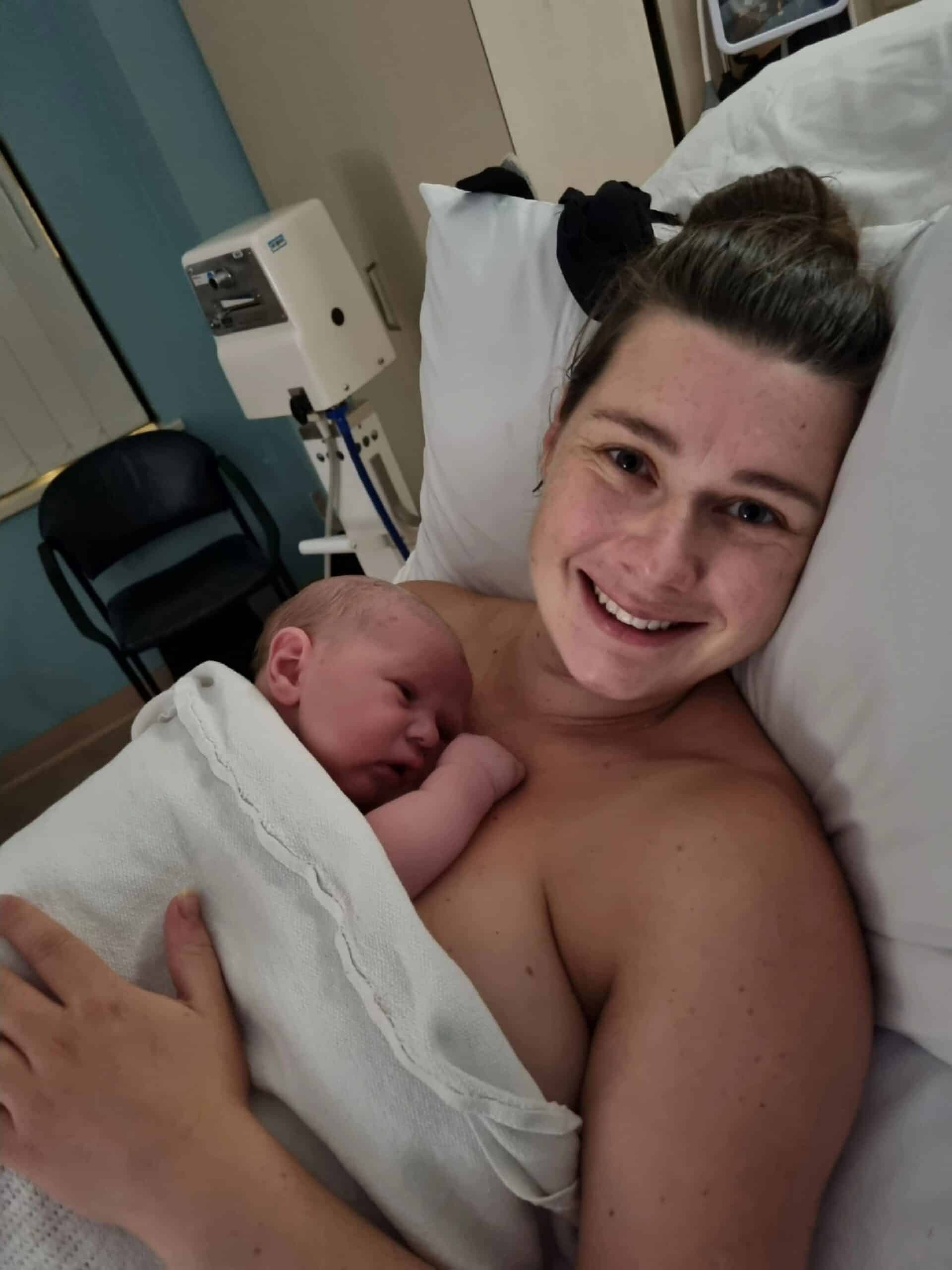Podcasts Melissa – home birth after a caesarean (HBAC)
EPISODE 350
Melissa – home birth after a caesarean (HBAC)
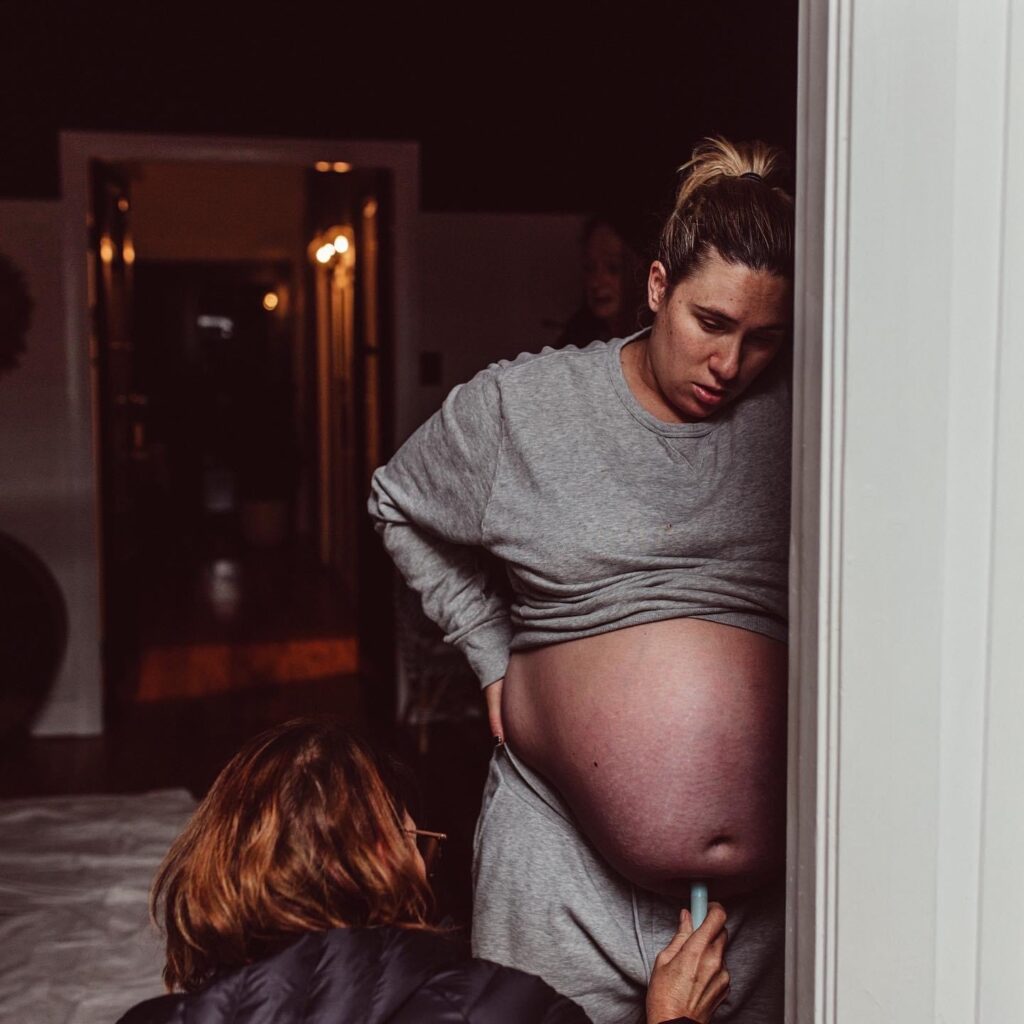
“I’d just bought my first business when I discovered that I was pregnant. I actually booked in for a termination because I didn’t think I wanted to go through with it but I chatted to my husband and he was adamant we could have a baby and a business and that really encouraged me and I changed my mind.
“I had no idea about where I would go for care. My mum had four caesareans and I just presumed I would too. When I had the blood test my GP just asked me what I wanted to do; go public or private? I got into the caseload programme in my local public hospital and I had continuity of care with a known midwife which was really lucky. I think because I was so young I wasn’t taking in everything she was telling me; instead I listened to my family and friends and all the information just felt really overwhelming.
“I didn’t do any birth preparation; I was busy with my gym, I was young and naive and so many women told me that labour was out of my control anyway. I got to 41+2 and the induction conversation came knocking and I was so anxious to meet my baby and well and truly cooked so I agreed. I had the balloon catheter put in and the next morning I went in for the medical induction. They broke my waters and started the syntocinon drip straightaway.
“The contractions were hot, heavy and fast from the get-go. I promised myself I would get to 1pm before I asked for the epidural and I made it but it was such an awful experience. I sat on the bed with the CTG monitor on, I felt sick and nauseous and I didn’t know how to manage the pain so I just sat there crying. By 7:30pm I was only 5 cm and his heartrate had been dropping so I was labelled failure to progress and that’s when a caesarean was suggested which seemed to be the convenient option. I wasn’t upset about it, I think naivete was on my side because I didn’t realise how complex a caesarean was. Easton was born at 8:22pm and I was back on the ward by 11pm.
“I knew it wasn’t right. I had an uneasy feeling that I had been jibbed. I didn’t want to say anything because I had a healthy baby and everyone around me was telling me I had done what I could. The narrative was to be grateful for your healthy baby and don’t worry about you. I struggled because I was unheard. When he was 18-months-old I started reading about the hormones of labour and the process of natural labour and the importance of it for breastfeeding, too.
“When I was pregnant with Ted I knew I was going to prepare for a VBAC. I was hellbent on birthing out of my vagina. I met with my obstetrician and she agreed we could prepare for a VBAC and everything would be fine. I got to 20 weeks and I was really well, watching what I was eating and exercising. My OB switched the script when I mentioned that I had hired a doula to help support me in labour. She got offended and defensive and asked why she wasn’t enough which was a really uncomfortable conversation. She put all of these restrictions on me; if I didn’t dilate 1cm every hour, if the baby was big or I went over 40 weeks, I would be going in for a c-section. I don’t think she wanted to participate any more.
“I spoke to my doula and she suggested a homebirth. I didn’t even know women still birthed at home but I called a local midwife – Jo Hunter – and asked to meet with her and ask all the questions. She came out and met with Adam and I and she was so relaxed and smelt like essential oils and she was a wealth of knowledge. We asked her every question under the sun and we immediately felt comfortable and booked her that day.
“I had all my pregnancy appointments at home, Jo listened to Easton’s birth story and we read my hospital notes which helped me release some of that trauma, and it was a family affair where everyone felt very involved. She gave me a list of things to buy for the birth; an icecream container for the placenta, towels and drop sheets, which was strange but empowering. She also really prepared me to go past my estimated due date and I felt much stronger mentally and I stayed calm.
“I went to 40+5 and then I started getting contractions at 10am on Easton’s 3rd birthday. They went on for most of the day and into the evening. I couldn’t relax so I got up at midnight and then at about 4am I woke Adam up because I couldn’t do it alone anymore. I was shocked by the difference between induced contractions and natural contractions. The difference was like being on a rollercoaster and a rowboat. I also did a lot of mental preparation and breathwork during pregnancy but mostly they were just so manageable and they grew stronger very slowly; I could breathe through them for hours and hours.
“I called Jo at 7am and she arrived about 10am. It got to the early afternoon – about 2pm – and that’s when transition hit. I cornered Adam in the bathroom and told him we needed to go to hospital and have an epidural. Jo talked to me and told me we could go to hospital but this, this and this would happen and I said: fine, I’ll keep going and I got in the pool. An hour later I requested a vaginal examination; I was 9.5cm and she could feel my waters so I requested that she break my waters. Then it all went really quickly. I pushed on the floor for a while and I found it quite hard to push, especially because I was screaming instead of bearing down. She started crowning so they helped me get in the bath and she was born. She was quite purple and startled and she needed a few wipe downs and a bit of the oxygen but she was fine; 4.6kg and a big, chunky delight from the start. The oxytocin was flowing and I sat in the bath with her for an hour and then I got out. I birthed the placenta about two hours later and Jo explained it all to Adam and I as she checked it over.
“I had a second-degree tear and the midwives stitched me up in the bedroom and then they had a cup of tea before they left. Jo came back for the first five days afterwards and then once a week till six weeks was just so wonderful.
“My next pregnancy ended in a miscarriage; I found out at 10 weeks that there was no heartbeat. It was heartbreaking and honestly, the last thing I expected to happen. I worked with a therapist after that and four months later we decided to start trying again and I conceived Porter. I called Jo before I’d even told Adam. We spoke on the phone a lot but I actually didn’t see her till 27 weeks.
“I was 40+3 when I went into labour. Throughout my last trimester I couldn’t tell where he was sitting and I was getting a grinding feeling of his shoulder on my pelvic bone. Jo noticed that he wasn’t sitting in an ideal position but it wasn’t a terrible position either. On the Sunday afternoon I started having very light contractions and they continued all day Monday and then by Monday evening they were stronger so I called Jo and then got in the bath. Jo arrived at 9pm and I continued labouring and then at 11pm I told her it was so painful and there was still pain between contractions which she found concerning. She checked his heart rate during and between contractions and didn’t like it so she suggested a hospital transfer. Of course I was just happy I could get an epidural. Jo called the ambulance and everything was quick and calm.
“I got into the hospital and everyone was fangirling that Jo was coming in. It was so supportive; I can’t tell you how much everyone was encouraging. I got into the birthing suite and Jo followed behind. They put the CTG on and his heart rate was completely fine. There were lots of contractions and screaming for the epidural but Jo reminded me that that’s not what I wanted. I requested the hospital midwife break my waters and then I got in the bath and started pushing from there. The pushing was so much easier this time and I got the fetal ejection reflex. He was crowning and I couldn’t quite get his whole head out so I rotated onto my back and pulled my knees out and I could feel a shift in the energy in the room. Karlie told Jo to hit the orange button and they told me to get out of the bath and onto the bed. I knew something was going on and I had to listen to them.
“The OB came in with a few midwives and neonatal nurses. The OB told me that he was going to pull and I was going to push and he hooked his fingers under Porter’s shoulder and rotated. He had shoulder dystocia and he was a bit stuck but once he was born he pinked up quite quickly. It was so quick and easy and everyone was wonderful. The care afterwards was very similar to the homebirth; they sat and talked with me and then helped me shower. I went home six hours later.”
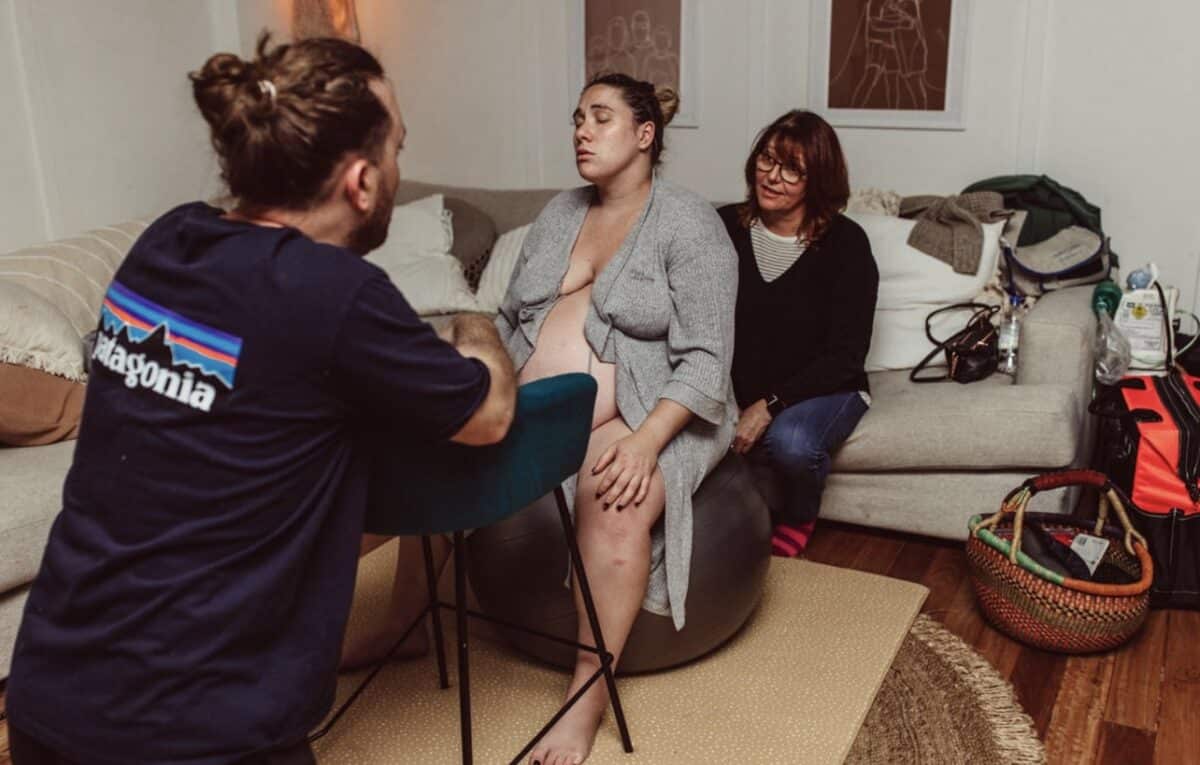
Image by Jerusha Sutton photography
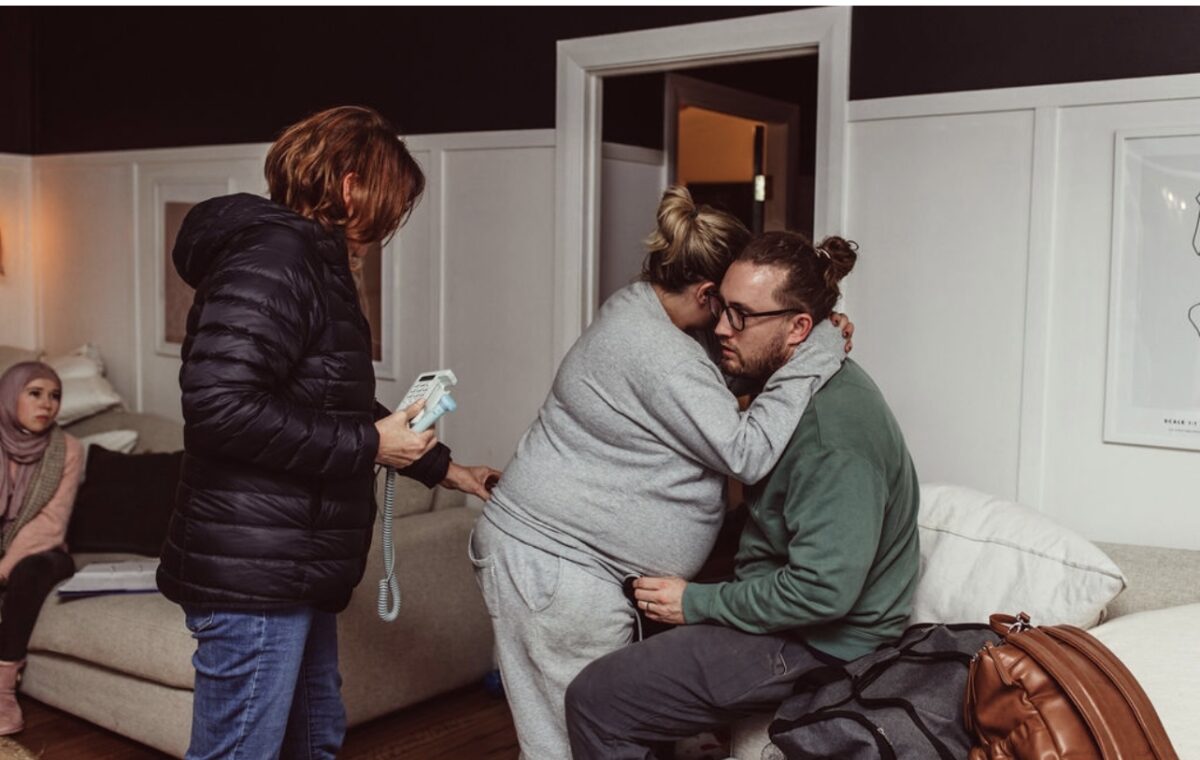
Image by Jerusha Sutton photography
Topics Discussed
Emergency caesarean, HBAC, homebirth transfer to hospital, Induction, Miscarriage, Private midwife, Shoulder dystocia, Three births
Episode Sponsor
In Australia, three in four parents spend up to two hours a day thinking about ways to improve their baby’s sleep habits, whilst another one in five parents admit to spending up to two hours each day shooshing, patting or rocking their baby. When parents around the country are turning to family, friends and Google for tips on how to improve their babies sleep and in turn, their own – this is when CuboAi steps in to help!
CuboAi is the world’s smartest baby monitor, designed by parents, for parents. The CuboAi Plus Smart Baby Monitor is dedicated to safeguarding your baby’s sleep, safety, and memories via empathetic innovations. Its hero product, CuboAi Plus Smart Baby Monitor is an award-winning baby monitor that uses AI technology to proactively warn parents of dangerous situations in real time including covered faces, crying, rolling over and wondering into danger zones. This can now be paired with the new CuboAi Sleep Sensor Pad which lies underneath your baby’s mattress to monitor breathing motions in the cot, without disturbing your child’s comfort or sleep.
When you’re looking for peace of mind, CuboAi is here to help you on your parenting journey.
Categories
Related Products
-
Birth Combs: Harness Your Body’s Natural Pain Relief
$24.95Crafted from smooth, natural wood, our birth combs activate specific pressure points in your hands that trigger your body’s innate pain-relieving responses.
Join the conversation
Sign up to get the latest updates, freebies, podcast releases straight into your inbox
@AustralianBirthStories
Follow along with us
@AustralianBirthStories
Follow along with us
@AustralianBirthStories
Follow along with us
@AustralianBirthStories
Follow along with us
@AustralianBirthStories
Follow along with us
@AustralianBirthStories
Follow along with us
@AustralianBirthStories
Follow along with us
@AustralianBirthStories
Follow along with us
@AustralianBirthStories
Follow along with us
@AustralianBirthStories
Follow along with us
@AustralianBirthStories
Follow along with us
@AustralianBirthStories
Follow along with us
